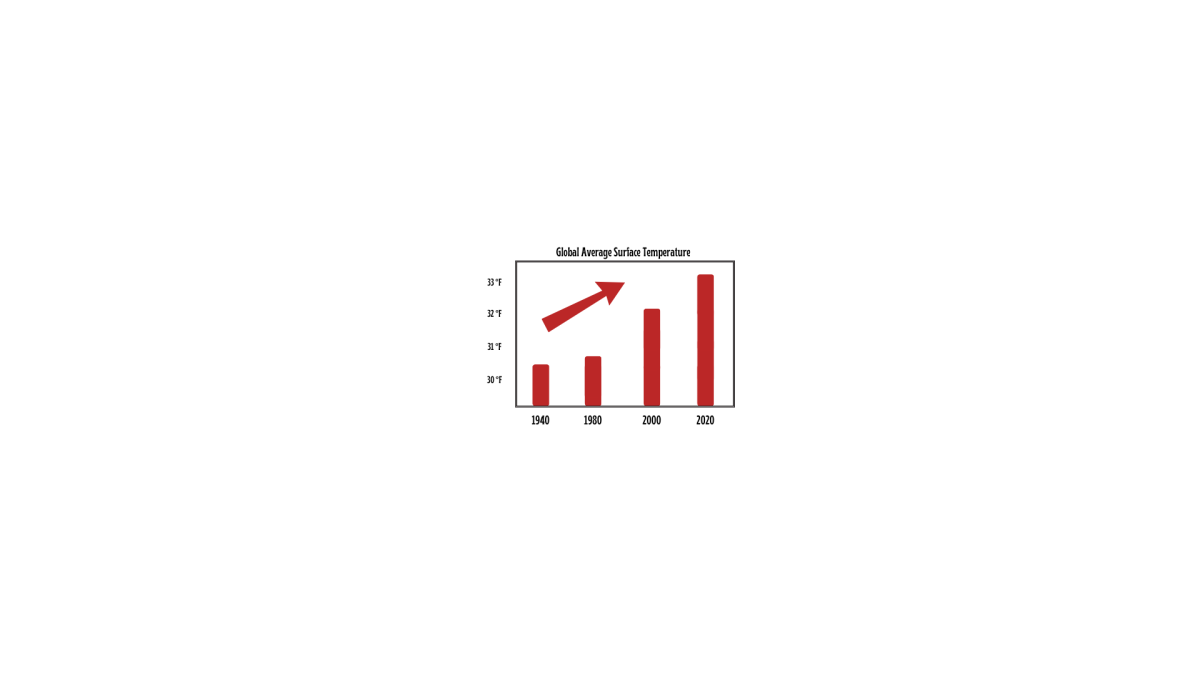
The year 2023 has concluded, leaving behind a record-breaking increase in temperature. The ocean and land temperatures were about 0.27 degrees Fahrenheit above the previous record set in 2016, and several climate scientists expect temperatures to continue rising. With the entirety of the world being affected by this heat, scientists, leaders and environmentalists are scrambling to find solutions.
In response to this urgent global crisis, many factors that contributed to the severity of global temperature are under scientific investigation.
However, some factors are clear, such as continued climate warming and El Niño, which is the warming of the ocean surface in the central and eastern tropical Pacific Ocean.
These elements all contributed to the dramatic increase in temperature throughout the year of 2023.
In fact, “2023 was an exceptional year with climate records tumbling like dominoes. Not only is 2023 the warmest year on record, it is also the first year with all days over [33.8°F] warmer than the pre-industrial period. Temperatures during 2023 likely exceed those of any period in at least the last 100,000 years,” said Samantha Burgess, Deputy Director of the Copernicus Climate Change Service.
A major contributor to the rising temperatures are greenhouse gasses (GHG), which are a byproduct of the industrial world that is still predominantly tied to fossil fuels. In particular, the goods movement industry, the movement of products all across the globe, is responsible for a large portion of global GHG emissions.
“Billions of tons of cargo are transported around the world each year by trucks, planes, ships, and trains. This transportation makes up 8% of global GHG emissions, and as much as 11% if warehouses and ports are included,” wrote Suzanne Greene, Program Manager of the MIT Sustainable Supply Chains Initiative, in the article “Freight Transportation.”
About twenty minutes from Palos Verdes High’s campus are the nation’s two largest container ports: the port of Los Angeles and Long Beach. The ports jointly adopted a Clean Air Action Plan, as well as many other policies dedicated to greening the goods movement industry here and with their global partners.
“The port has various strategies to decarbonize its operations for the large sources (ships, trucks, trains, cranes and tugboats) that move freight in and out of its complex. For instance, the port has the following impressive goals to replace its current fleet of cargo handling equipment (i.e. cranes and tractors) with zero emission battery electric and hydrogen fuel cell alternatives by 2030 and for big rig trucks by 2035,” said Tim DeMoss, Port of Los Angeles Air Quality Manager.
Achieving these goals is challenging for the port of Los Angeles, as they work with international shipping companies, logistics companies, and even foreign governments.
“Part of the challenge with policy and regulation development is considering all the parties at the table and what your role and limitations are as a local agency,” said Nicole Enciso, California environmental quality manager.
“We always want to do what we can to reduce the impacts our construction and operations have, but need to balance that desire with the feasibility to implement those changes.”